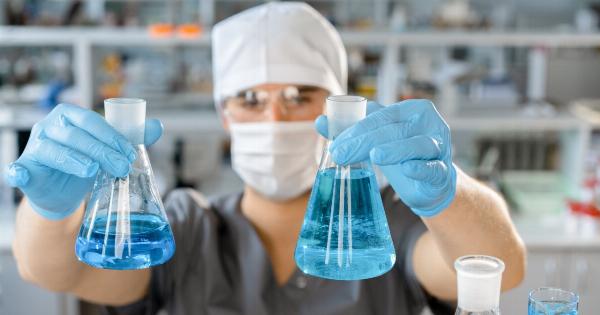International Volunteer Donor Day is a day dedicated to celebrating and honoring bone marrow donors and the lives they have saved.
It is an annual event held on the third Saturday in September, recognized worldwide as a way to raise awareness about the importance of bone marrow donations and recognize the selflessness of these volunteers.
The Importance of Bone Marrow Donations
Bone marrow transplantation is a life-saving procedure for those suffering from diseases such as leukemia, lymphoma, and other blood disorders. For many patients, a bone marrow transplant is their only hope for survival.
Bone marrow, found inside our bones, contains stem cells that are responsible for producing red and white blood cells and platelets. These cells are crucial for carrying oxygen, fighting infections, and clotting blood.
However, certain illnesses can impair the normal functioning of the bone marrow, leading to severe health complications.
When a patient requires a bone marrow transplant, finding a compatible donor is essential. The compatibility is determined by human leukocyte antigens (HLA), which are proteins present on the surface of white blood cells.
The closer the HLA match between the donor and the recipient, the better the chances of a successful transplant.
Unfortunately, finding a suitable donor can be challenging, especially when the patient belongs to an ethnic minority or has rare tissue types.
This is why the availability of a diverse pool of bone marrow donors is crucial to give every patient an equal chance at finding a match.
The Role of Volunteers
Volunteers play a vital role in saving lives through bone marrow donations. They selflessly offer their bone marrow or stem cells to save the lives of strangers.
Their generosity and willingness to help have granted hope and extended lifespans for countless individuals around the world.
Becoming a bone marrow donor involves a straightforward process. Volunteers can register with organizations such as , where they provide a cheek swab or a blood sample for HLA testing.
This information is then added to a database, increasing the chances of finding a match for patients in need.
Donors may be called to donate their bone marrow or stem cells if they are identified as a potential match for a patient. The donation process itself may vary, but it typically involves two main methods:.
1. Peripheral Blood Stem Cell (PBSC) Donation
PBSC donation is the most common method used for bone marrow transplants. It is a non-surgical procedure that involves extracting stem cells from the donor’s bloodstream. This is achieved through a process called apheresis.
During the donation, the donor receives medication to increase the production of stem cells in their bloodstream. Blood is then drawn from one arm, passed through a machine that separates the stem cells, and returned to the donor through the other arm.
This process lasts several hours.
PBSC donation is a relatively simple and well-tolerated procedure, allowing donors to resume their normal activities within a few days.
2. Bone Marrow Donation
In some cases, a bone marrow donation may be required. This involves a surgical procedure performed under general anesthesia. The donor’s bone marrow is extracted from the back of their pelvic bone using a hollow needle.
The amount extracted depends on the recipient’s needs.
Bone marrow donation can cause discomfort and require a few days of recovery. However, the donor’s bone marrow naturally replenishes itself within a few weeks, and their overall health is not significantly impacted.
The Impact of Bone Marrow Donations
Bone marrow donations have a profound impact on the lives of patients, offering a chance for survival and improved quality of life. For many individuals with life-threatening blood disorders, a successful transplant is a second chance at life.
Transplants can help patients by:.
1. Curing Diseases
A successful bone marrow transplant can cure certain blood disorders, such as leukemia and lymphoma.
By replacing the diseased or malfunctioning bone marrow with healthy stem cells, the patient’s body can generate healthy blood cells, providing a potential cure.
2. Improving Quality of Life
Even in cases where a complete cure is not possible, bone marrow transplants can greatly improve the patient’s quality of life.
Transplants can help normalize blood cell counts, reduce the need for frequent blood transfusions, and decrease the risk of infections, ultimately improving overall health and well-being.
3. Prolonging Life
Bone marrow transplants can prolong the lives of individuals with blood disorders by providing them with healthier bone marrow to replace the diseased or malfunctioning one.
This extended lifespan allows patients to spend more time with their loved ones, pursue their dreams, and experience the joys of life.
Recognizing Bone Marrow Donors
International Volunteer Donor Day is an opportunity to honor and recognize the incredible individuals who have selflessly donated their bone marrow to save lives.
Organizations and communities worldwide hold events and ceremonies to acknowledge the contributions of bone marrow donors.
These celebrations often include testimonials from transplant recipients, educational workshops on the importance of bone marrow donations, and opportunities for individuals to register as potential donors.
By celebrating these donors, we not only express gratitude for their generosity but also encourage others to consider becoming donors themselves.
Becoming a Bone Marrow Donor
If you are inspired by the selflessness and impact of bone marrow donations, you can take steps to become a donor:.
1. Understand the Requirements
Before becoming a bone marrow donor, it is essential to understand the requirements and eligibility criteria. Donors must be in good overall health, between the ages of 18 and 60, and willing to commit to the donation process.
2. Register with a Donor Database
You can register with a bone marrow donor database, such as. The registration process typically involves providing your contact information and completing a health questionnaire.
Some organizations may also require a cheek swab or blood sample for HLA testing.
3. Spread the Word
Once you are registered as a donor, spreading the word about the importance of bone marrow donations can help raise awareness and encourage others to become donors.
Share your experience, educate others about the donation process, and dispel any misconceptions or fears associated with bone marrow transplants.
4. Donate if Matched
If you are identified as a potential match for a patient in need, you may be contacted by the organization for further testing. If confirmed as a match, you will have the opportunity to donate your bone marrow or stem cells and potentially save a life.
Conclusion
International Volunteer Donor Day is a time to recognize and celebrate the selfless acts of bone marrow donors who have given hope and saved lives.
Their donations have the power to cure diseases, improve the quality of life, and prolong lifespan for patients in need. By becoming a bone marrow donor or supporting organizations involved in these life-saving efforts, we can all contribute to a more inclusive and compassionate world.


























